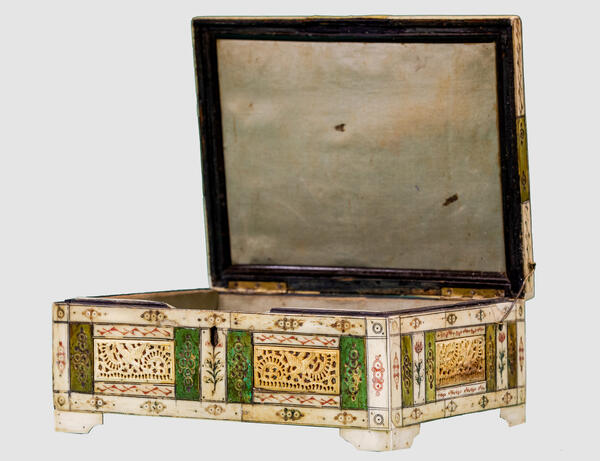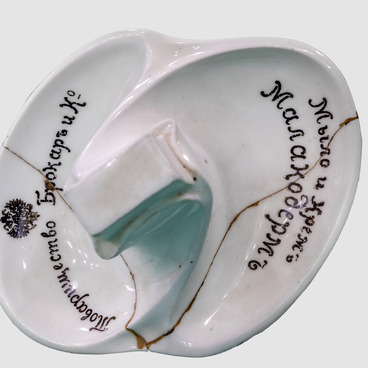This casket (chest) was created in 1750—1770 by artisans of the Russian North from wood and bone: they used mammoth tusk and tarsometatarsus (bones found in lower legs of birds). It is decorated with details from metal, fabric, paper, and mica. The inner side of carved bone inlays is covered with multicolored mica, a mineral that can be easily separated into thin, transparent layers used for decoration. The artists used not only carved inlays but also tinted mica and foil, a typical decoration methods used for chests back in those times.
The chest is decorated with multiple traditional ornaments from the Slavic mythology. The media used are shading, carving, and engraving. Legend has it that the bird on the carved bone inlay symbolizes a supreme Slavic deity. This deity created the whole world and is the embodiment of the unity of all descendants, the entire Universe and nature, the ground zero of all things. In its earthly form, the deity looked like a gray duck, the symbol and conduit of its power.
The patterns engraved on the casket can be distinguished by color. For instance, the red ones represent the energy of life, fire, sun. They grant good health, perfection, warmth, and protect from evil eye. The color black is the symbol of earth, fertility, and motherhood. The green background represents youth and revival, the triumph of life; it is a symbol of a sown field and young crops. The tree of life was always painted with green.
The yellow background stands for the sun, intelligence, intuition, faith, the divine, nobility, and dignity. The white background symbolizes air, enlightenment, purity, chastity, holiness, redemption, and spiritual power. This color also represents day time, the time of labor and good deeds. Stylized ornaments contain sacred symbols, like the circle that is a symbol of eternal life and the Sun. Three circles refer to a charm protecting its owner from ill-wishers.
The Kudryavtsev family from Mytishchi kindly donates this casket to the Mytishchi History and Art Museum. They inherited the casket as a wedding gift in 1916. The chest was passed down for generations as a holiday present. On the bottom of the chest, there is an inscription made when it was gifted back in the 19th century. It reads: ‘19 May 1851’.



